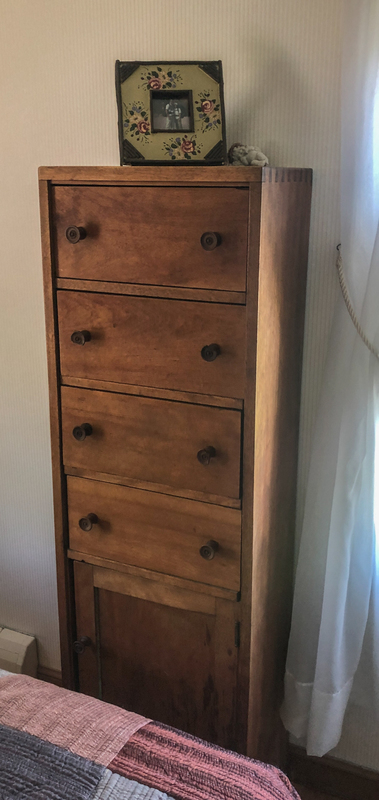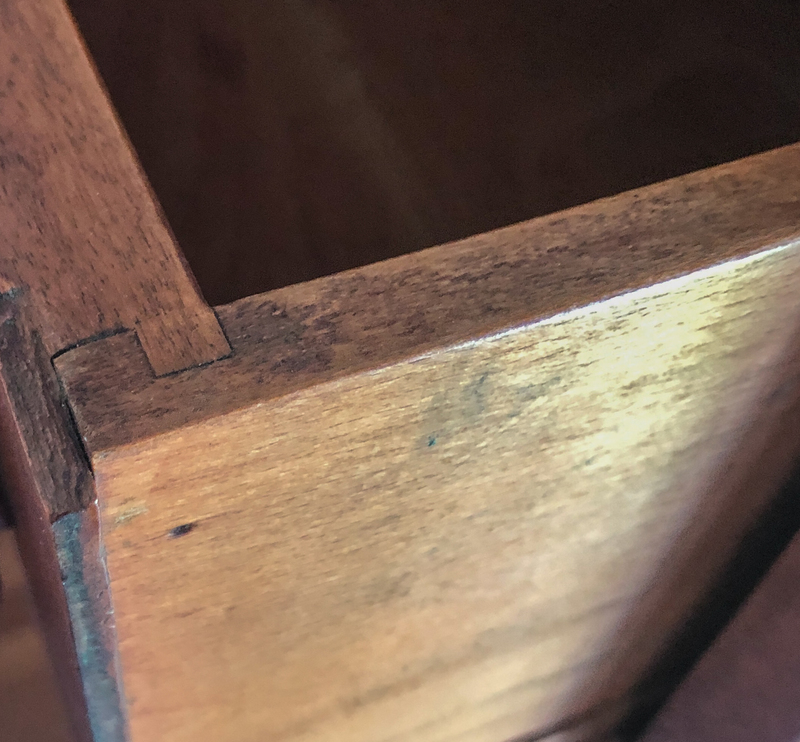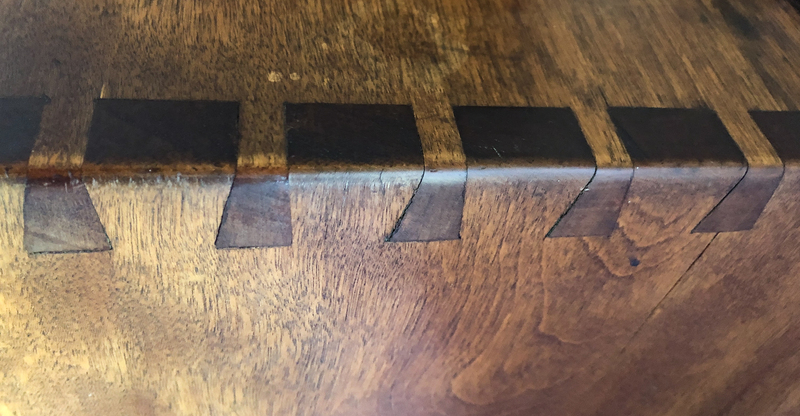Hamper or Chest
Item
Title
Hamper or Chest
Creator
Gustav Stickley (attr.)
Date
1917
Medium
Walnut (?), with beech.
Credit line
Collection of Stephen and Nancy Stickley Calderwood
Description
Amongst the items that had–until recently–proved difficult to identify in the 1917 inventory was a "baby's hamper" listed as "belonging to Mr. and Mrs. George Creuss in the main dwelling," as no photographs of such an item survived, and the form is unknown in Stickley's work. The first clue that links this object to that description is provenance. According to family tradition, this was made by Gustav Stickley for Mildred's daughter Ruth, who was born on the property in August 1917.
In keeping with that history, this hamper or chest has all the hallmarks of a bench-made piece rather than one produced at the factory. The drawers are not dovetailed, they feature a rabbeted joint that is held together with nails. The case, however, is dovetailed, which is unique amongst Stickley's work. The top corners have been rounded over, which is again atypical of work produced in the factory but a detail that begins to appear in Stickley's drawer construction around this time. Moreover, the drawer pulls are precisely the ones found on Chromewald furniture of the period, again strengthening the connection to Stickley's production. Below the bottom door, the skirting between the front legs is arched and pegged to the sides. Based on these factors, we have attributed the work to him, though whether this was made by him or someone else at his direction is not known.
While the idea of a bench-made piece might strike some as peculiar, if not altogether impossible, for a man who had a furniture factory at his disposal, it should be remembered that a retooling of the shop and machine settings, the creating of patterns and jigs for the workers, and the time and money that would have involved make a solution like this the more practical and efficient way to execute this piece of furniture. It is worth remembering too, that Craftsman Farms had a wood shop above the Horse Barn that was listed at the time of its sale. While this likely was used to make repairs for equipment and to construct the joinery needed for the temporary hay sheds and building of the chicken coops, all of the tools necessary for this piece of furniture would have been on hand.
In keeping with that history, this hamper or chest has all the hallmarks of a bench-made piece rather than one produced at the factory. The drawers are not dovetailed, they feature a rabbeted joint that is held together with nails. The case, however, is dovetailed, which is unique amongst Stickley's work. The top corners have been rounded over, which is again atypical of work produced in the factory but a detail that begins to appear in Stickley's drawer construction around this time. Moreover, the drawer pulls are precisely the ones found on Chromewald furniture of the period, again strengthening the connection to Stickley's production. Below the bottom door, the skirting between the front legs is arched and pegged to the sides. Based on these factors, we have attributed the work to him, though whether this was made by him or someone else at his direction is not known.
While the idea of a bench-made piece might strike some as peculiar, if not altogether impossible, for a man who had a furniture factory at his disposal, it should be remembered that a retooling of the shop and machine settings, the creating of patterns and jigs for the workers, and the time and money that would have involved make a solution like this the more practical and efficient way to execute this piece of furniture. It is worth remembering too, that Craftsman Farms had a wood shop above the Horse Barn that was listed at the time of its sale. While this likely was used to make repairs for equipment and to construct the joinery needed for the temporary hay sheds and building of the chicken coops, all of the tools necessary for this piece of furniture would have been on hand.


